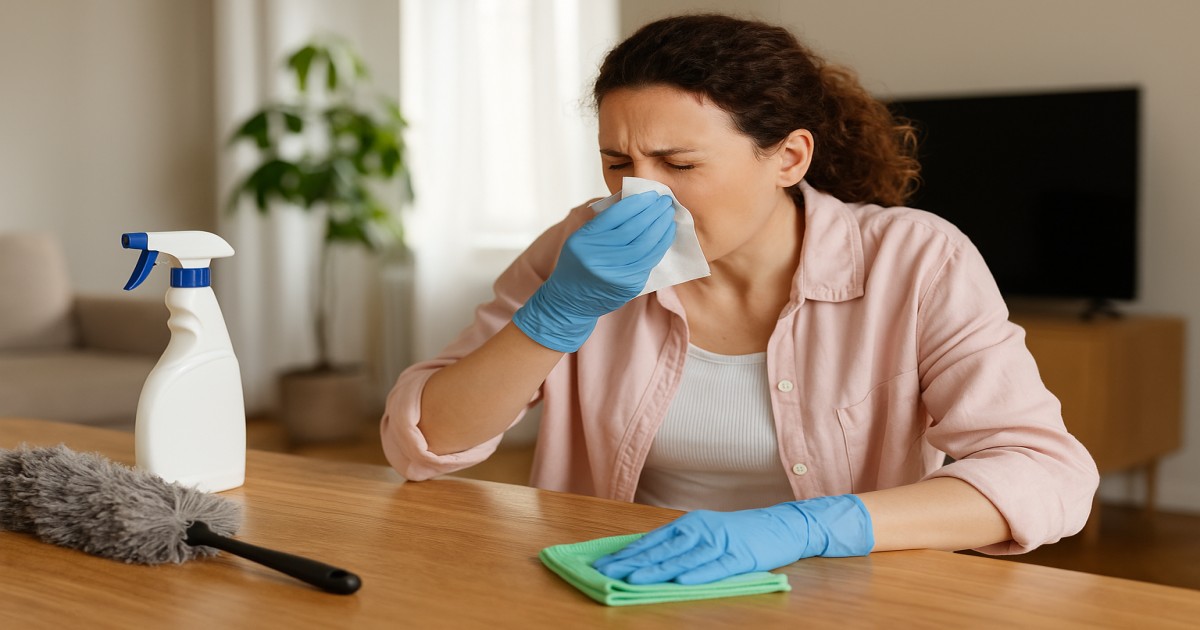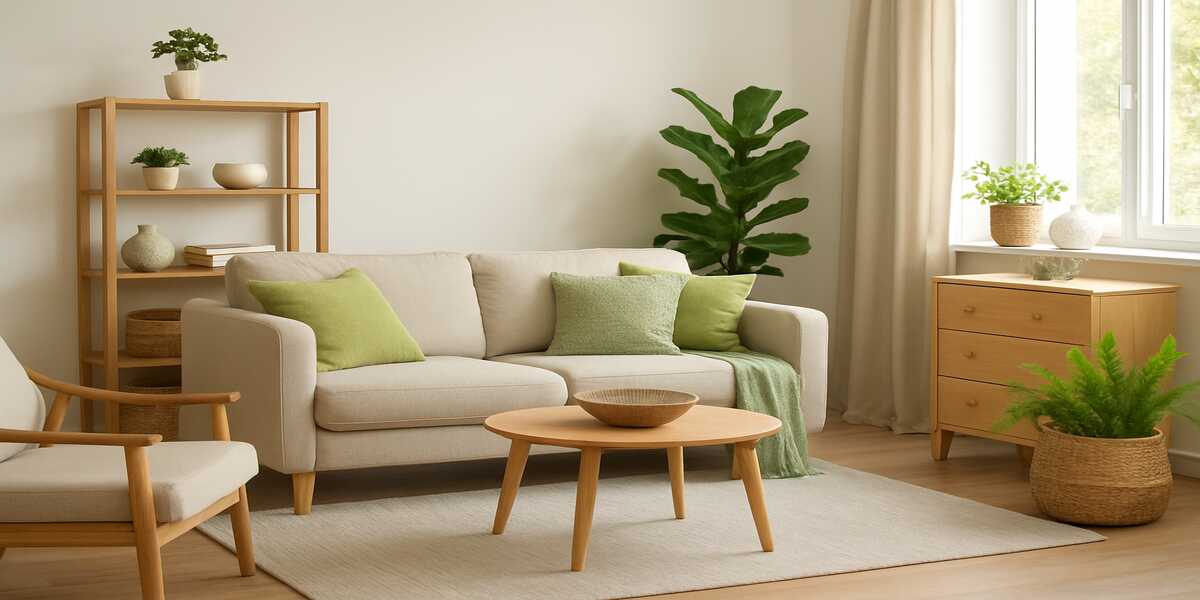
Dusting methods for people with allergies
Does sneezing accompany your cleaning activities? You are not alone. For allergy sufferers, dusting can seem like an invisible opponent who always wins. In any way, however often you clean, the dust comes crashing down on you: itchy eyes, sneezing fits, and runny noses. So what if we told you that it isn’t just about how often you use the dusting method really matters?
In this blog, we shall unveil expert dusting methods that have a gripping capability. Once dusting has been done, it lies with the dust and the allergens nearby. It is about more than hard dusting; it is about working smarter with proven tools, methods, and habits that people with allergies can rely on. In your own home, are you prepared to breathe easier? Let us look at some of the solutions to stay one step ahead of allergens today.
Why Is Proper Dusting Crucial for Allergy Sufferers?
Dust is more than just an annoyance’s a cocktail of allergenic elements seen during bond cleaning Brisbane. Usually present in dust are dead skin cells, pollen, pet dander, mold spores, and dust mite faeces. This invisible cocktail can trigger different allergy symptoms such as sneezing, coughing, watery nose, watery or itchy eyes, or even asthma attacks in allergic people. Dusting poorly makes for an ongoing source of irritation in your house. Effective dusting improves the air quality and helps with the major reduction of all the symptoms. According to the Australian Government Department of Health and Aged Care, maintaining clean indoor environments—including light housework like dusting—is essential for reducing allergens and supporting respiratory health.
Dust Always Top to Bottom
The golden rule for good dusting is one that always starts at the top of the room and works down. Gravity, after all, will cause dust to settle downward, so starting high avoids re-dirtying areas that have already been cleaned. For instance, begin with ceiling fans, high shelves, or crown mouldings, then walls and framed art. Lower shelves, tables, and counters come next before graceful finishing touches at the baseboards and floor. In this systematic manner, dust is pushed down for it to be either vacuumed or mopped away instead of simply being moved from one area to another in your home.
Use the Right Dusting Tools
Not all dusters are equal, especially for allergy sufferers. Feather dusters, for instance, are very beautiful to look at but do an incredibly poor job of trapping dust; instead, they merely shift dust around and release particles into the air. Utilise microfiber cloths that can capture and hold dust particles easily and efficiently. A second recommendation is to utilise an electrostatic duster, which exploits the phenomenon of static electricity to draw in the dust particles. By doing so, the dust will not be carried in the air. To have the best and deepest possible cleaning, you should use a vacuum cleaner with a HEPA filter that will not only clean the dust but also keep smaller allergy-causing particles from circulating in the air again. The use of dry paper towels or cloths that might only spread the particles instead of accumulating them should be avoided.
Dust Well with a Damp Cloth
It is a big plus for allergy sufferers. Slightly dampened microfiber cloths trap the dust and hold it, unlike dusting that simply sends particles into the air. To prevent harm to the surfaces, the cloth should be somewhat moist, but not soggy. Hence, little drops of oil, like tea tree or eucalyptus which can be added to water. With these oils, it can smell great, and their antibacterial properties will help in increasing the cleaning level.
Don’t Overlook these Hidden Dusty Zones
Some of the dustiest zones in your house are the places you rarely check or think of cleaning. Dust gets layered there and can easily blow around to cause allergic reactions. These include tops of door frames, baseboards, light fixtures, air vents, and the areas behind furniture and electronics. Run your vacuum cleaner through these hidden areas every now and then, preferably once a month. Adjustable extension wands, bendable dusters, and long-handled tools are great options for dusting tough corners and intricate spaces that might otherwise spill allergens into the air.
Stick to a Regular Dusting Schedule
Being regular is of utmost importance when dealing with indoor allergens. Dust every room at the minimum once per week. Depending on the rate of pollen surging into the house from outdoors, this window might even be smaller. Splitting dusting engagements into chunks also builds motivation. For example, dust in the living room and hallway on Monday; focus on bedrooms by Wednesday, and then wrap it up on Friday with kitchens and bathrooms. This spaced-apart plan helps curb the weight of so much to do and ensures another step toward fostering a clean and allergy-friendly ambiance.
Clean Air to Enhance Indoor
Dusting is necessary for cleaning and so is the reduction in airborne dust. A good purifier with a HEPA filter can go a long way in managing indoor allergens. Do not let pollen enter during pollen season by keeping all windows shut, and change your HVAC filters regularly to keep dust accumulation at bay inside the ventilation system. Eleven humidity from the bathroom and kitchen will also hamper mould and dust mite growth. If your home is very humid, a dehumidifier will get you to the right moisture level.
Washing Clothes and Transporting Protective Covers
Proper dusting of the house is not confined only to getting the dirt off the rooms and cleaning the carpets. The bedroom mattresses must be protected against allergens and dust mites, as well as the sofa, which has to be devoid of dust mites. Tablet the bed linens once a week at a temperature of at least 60°C (140°F) to ensure that the mites have been killed. This will also help to eliminate allergens. Curtains should be shaken out or vacuumed regularly, and blinds should be wiped with a wet microfiber cloth. Keep fabric-covered furniture vacuumed with the right attachments to the best extent, as dust gets right inside the cushions and seams.
Conclusion
Dusting is serious business for those with allergies, who are used to considering it not as a chore, but as an essential cleaning to actually maintain a dust-free area for healthy living. Allergy reduction in the homes can be maximized with enhancements in tools, processes, and timing, allowing everyone to breathe cleaner, easier air anew. So, be it with a microfiber cloth, an air purifier, or simply dusting the often-neglected shelf in the back of the TV, any action today definitely means less sneezing tomorrow. Are you prepared to take back all the comfort? Your dust-free, allergy-friendly heaven awaits.
Also learn about The Complete castile soap cleaning guide



